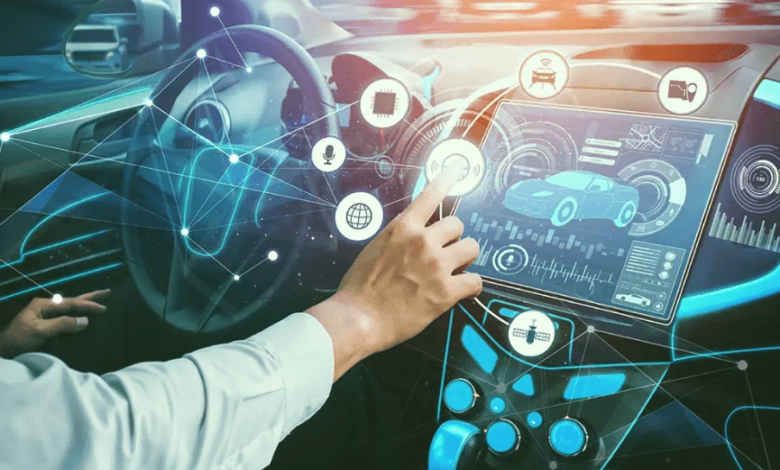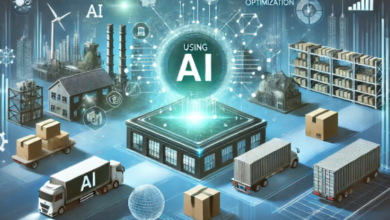Artificial Intelligence in Autonomous Vehicles

The integration of artificial intelligence (AI) into autonomous vehicles is revolutionizing the transportation industry. By enabling vehicles to sense, think, and act with minimal human intervention, AI is the driving force behind self-driving technology. From advanced perception systems to decision-making algorithms, AI is shaping a future of safer, more efficient, and environmentally friendly transportation.
What Are Autonomous Vehicles?
Autonomous vehicles, or self-driving cars, are equipped with sensors, cameras, radar, and AI-powered software that allow them to navigate roads, recognize objects, and make decisions in real-time. The levels of autonomy, as defined by the Society of Automotive Engineers (SAE), range from Level 0 (no automation) to Level 5 (full automation). Most vehicles on the market today are at Level 2 or Level 3, incorporating advanced driver-assistance systems (ADAS), while full autonomy (Level 5) remains a goal for the near future.
The Role of AI in Self-Driving Cars
AI is the backbone of autonomous vehicles, enabling them to process vast amounts of data, learn from experiences, and adapt to complex driving environments. Key AI components in self-driving technology include machine learning, deep learning, computer vision, natural language processing, and neural networks. These technologies work in harmony to interpret sensor data, make predictions, and execute actions that replicate human driving behavior.
AI-Powered Perception Systems
The perception system of an autonomous vehicle relies on AI to interpret data from various sensors. Cameras capture images of the surroundings, LiDAR (Light Detection and Ranging) creates 3D maps, and radar detects objects and measures distances. AI algorithms process this data to identify and classify objects, such as vehicles, pedestrians, and traffic signs. Computer vision, a subset of AI, plays a critical role in recognizing and interpreting visual information, ensuring that the vehicle accurately understands its environment.
AI for Real-Time Decision-Making
AI enables autonomous vehicles to make real-time decisions based on their perception of the environment. Reinforcement learning algorithms help the vehicle evaluate multiple scenarios and choose the optimal course of action, whether it’s navigating traffic, merging onto highways, or responding to sudden obstacles. Predictive modeling powered by AI anticipates the movements of other road users, allowing the vehicle to plan its path safely and efficiently.
Natural Language Processing in Autonomous Vehicles
Natural language processing (NLP) enhances the user experience in autonomous vehicles by enabling voice commands and conversational interfaces. Passengers can interact with the vehicle using natural speech, asking for directions, adjusting settings, or receiving real-time updates about traffic and weather. AI-powered voice assistants ensure seamless communication between humans and machines, making autonomous driving more intuitive and accessible.
Safety Features Enhanced by AI
Safety is a paramount concern in the development of autonomous vehicles, and AI plays a pivotal role in enhancing it. AI-powered systems detect potential hazards, predict collisions, and initiate proactive measures such as automatic braking or evasive maneuvers. Real-time monitoring of the vehicle’s systems ensures that any anomalies are detected and addressed immediately. Over time, machine learning algorithms improve safety by learning from past incidents and refining their responses.
AI and Connectivity in Smart Vehicles
Autonomous vehicles rely on AI to leverage connectivity technologies, such as vehicle-to-vehicle (V2V) and vehicle-to-infrastructure (V2I) communication. These systems enable cars to exchange information about road conditions, traffic patterns, and potential hazards. AI processes this data to enhance situational awareness and optimize driving strategies. Connected autonomous vehicles form the foundation of smart transportation ecosystems, improving efficiency and reducing congestion.
Challenges of AI in Autonomous Vehicles
Despite significant advancements, implementing AI in autonomous vehicles faces challenges. Data complexity poses a major hurdle, as autonomous vehicles generate and process enormous amounts of data in real time. Ensuring that AI systems can handle this data efficiently while maintaining high accuracy levels is critical. Another challenge lies in adapting AI to diverse road conditions, weather scenarios, and cultural driving behaviors, requiring extensive data collection and simulation. Ethical and legal concerns surrounding AI decision-making in life-and-death scenarios remain unresolved, as do questions of liability in accidents. Autonomous vehicles are also vulnerable to cybersecurity threats, emphasizing the need for robust security measures. High development costs for AI systems further complicate widespread adoption.
Advancements in AI for Self-Driving Technology
AI technology continues to advance, bringing autonomous vehicles closer to full deployment. End-to-end deep learning models streamline data interpretation and decision-making. Edge computing allows AI algorithms to operate directly within the vehicle, reducing dependency on external processing. Collaborative AI systems enhance vehicle-to-everything (V2X) communication, integrating seamlessly with smart cities and infrastructure. Quantum computing holds promise for exponentially improving the processing capabilities of AI in autonomous vehicles.
Applications of Autonomous Vehicles in Society
Autonomous vehicles are poised to transform personal mobility, making transportation more accessible and efficient, particularly for individuals who cannot drive, such as the elderly or disabled. Self-driving buses and shuttles are being tested for urban public transit systems, offering safe and cost-effective solutions. Autonomous trucks and drones are revolutionizing logistics, enabling faster and more reliable delivery services. Ride-sharing services like Waymo and Cruise are deploying autonomous vehicles, presenting an alternative to traditional taxis. Additionally, AI-equipped autonomous vehicles are finding applications in emergency response, assisting in disaster relief and search-and-rescue operations.
Conclusion
Artificial intelligence is the linchpin of autonomous vehicle technology, driving advancements in perception, decision-making, and connectivity. By enabling vehicles to learn, adapt, and interact intelligently, AI is revolutionizing transportation and shaping a future of safer, more efficient, and sustainable mobility. While challenges such as data complexity and ethical concerns remain, the progress being made in AI development and implementation is steadily overcoming these hurdles. As autonomous vehicles become a reality, AI will continue to be the key to unlocking their full potential, transforming not only how we travel but also how we live and interact in a connected world.




